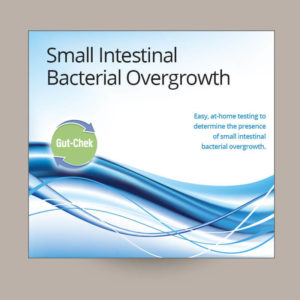Small levels of bacteria are normally present in the small intestine. Certain acquired conditions may allow excess levels of bacteria to live in the small intestine. When higher levels of bacteria come into the small intestine, they can cause many abdominal symptoms.
Bacteria exposed to sugar forms hydrogen and methane gas. The Gut-chek for small intestinal bacterial overgrowth (SIBO) uses glucose as a detection sugar to see if hydrogen and methane gas forms in the small intestine.
The Gut-chek for SIBO consists of four breath collections. We measure hydrogen, methane and carbon dioxide gas in all four tubes by gas chromatography.
The carbon dioxide gas level allows us to check if (a) the breath sample is valid and (b) normalizes the results in case the breath collection is not perfect.
We compare the hydrogen and methane levels in the 30, 60 and 90 minute breath samples to the baseline (0 minute) sample. If any of the post-glucose samples contain 20 parts per million (ppm) hydrogen gas above the baseline sample, or any methane point of 10 or more, you have bacterial overgrowth of the small intestine.



